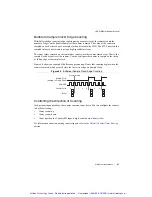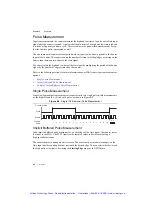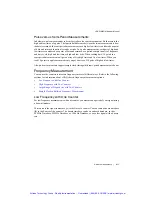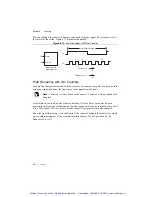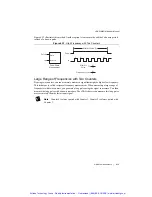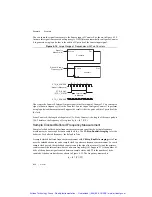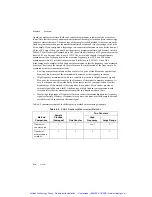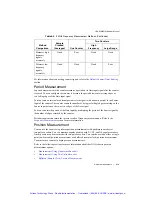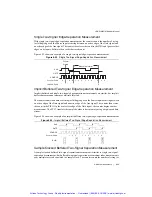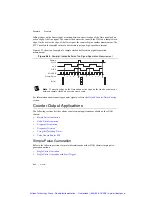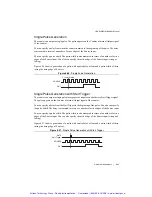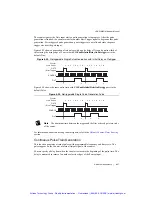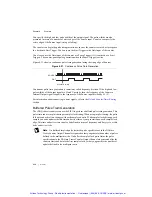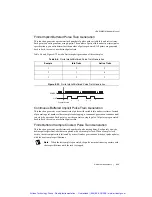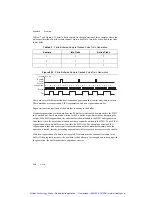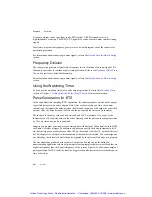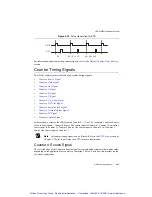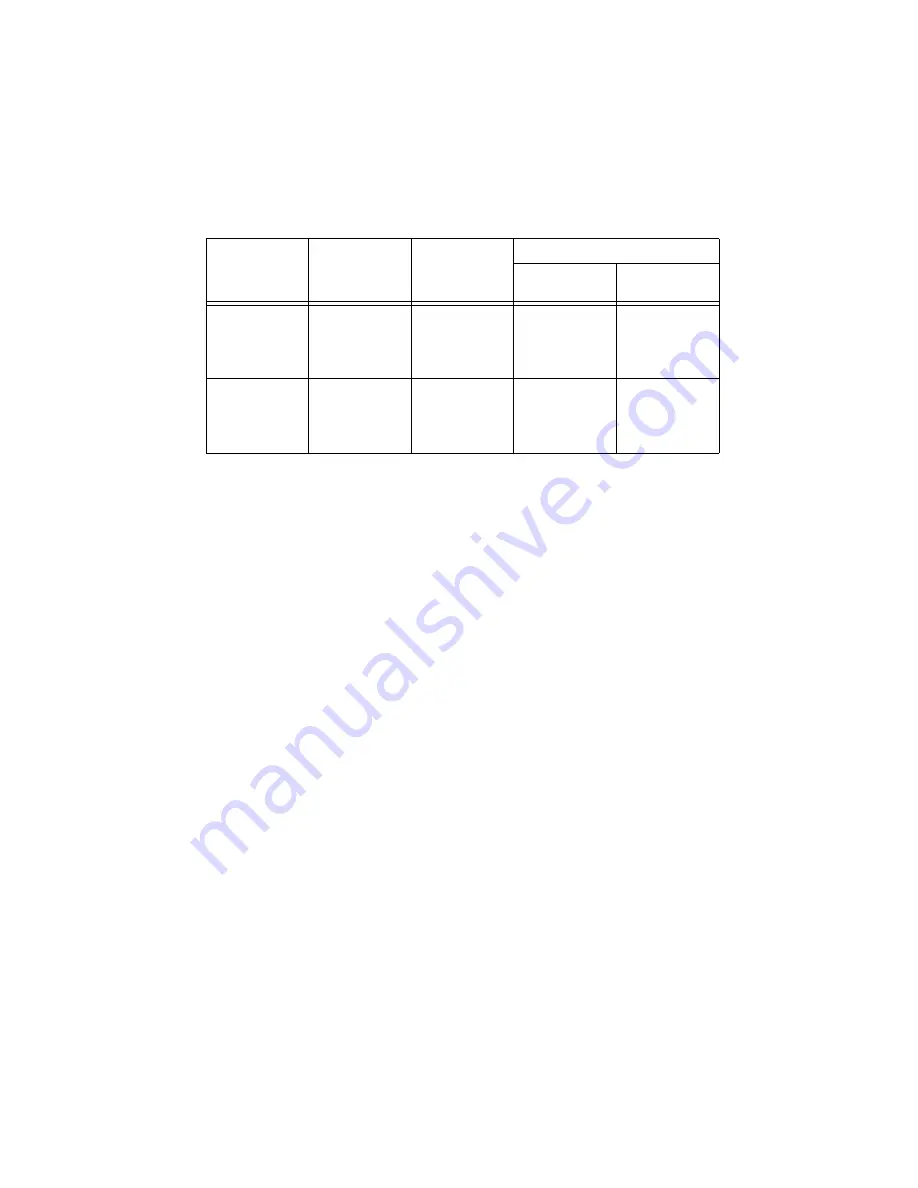
© National Instruments
|
6-19
cDAQ-9185/9189 User Manual
For information about connecting counter signals, refer to the
Default Counter/Timer Routing
section.
Period Measurement
In period measurements, the counter measures a period on its Gate input signal after the counter
is armed. You can configure the counter to measure the period between two rising edges or
two falling edges of the Gate input signal.
You can route an internal or external periodic clock signal (with a known period) to the Source
input of the counter. The counter counts the number of rising (or falling) edges occurring on the
Source input between the two active edges of the Gate signal.
You can calculate the period of the Gate input by multiplying the period of the Source signal by
the number of edges returned by the counter.
Period measurements return the inverse results of frequency measurements. Refer to the
Frequency Measurement
section for more information.
Position Measurement
You can use the counters to perform position measurements with quadrature encoders or
two-pulse encoders. You can measure angular position with X1, X2, and X4 angular encoders.
Linear position can be measured with two-pulse encoders. You can choose to do either a single
point (on-demand) position measurement or a buffered (sample clock) position measurement.
You must arm a counter to begin position measurements.
Refer to the following sections for more information about the cDAQ chassis position
measurement options:
•
Measurements Using Quadrature Encoders
•
Measurements Using Two Pulse Encoders
•
Buffered (Sample Clock) Position Measurement
Measures high
frequency
signals
accurately
Good
Poor
Good
Good
Measures low
frequency
signals
accurately
Good
Good
Good
Poor
Table 6-5.
5 MHz Frequency Measurement Methods (Continued)
Method
Comparison
Sample
Clocked
(Averaged)
One Counter
Two Counters
High
Frequency
Large Range
Artisan Technology Group - Quality Instrumentation ... Guaranteed | (888) 88-SOURCE | www.artisantg.com

